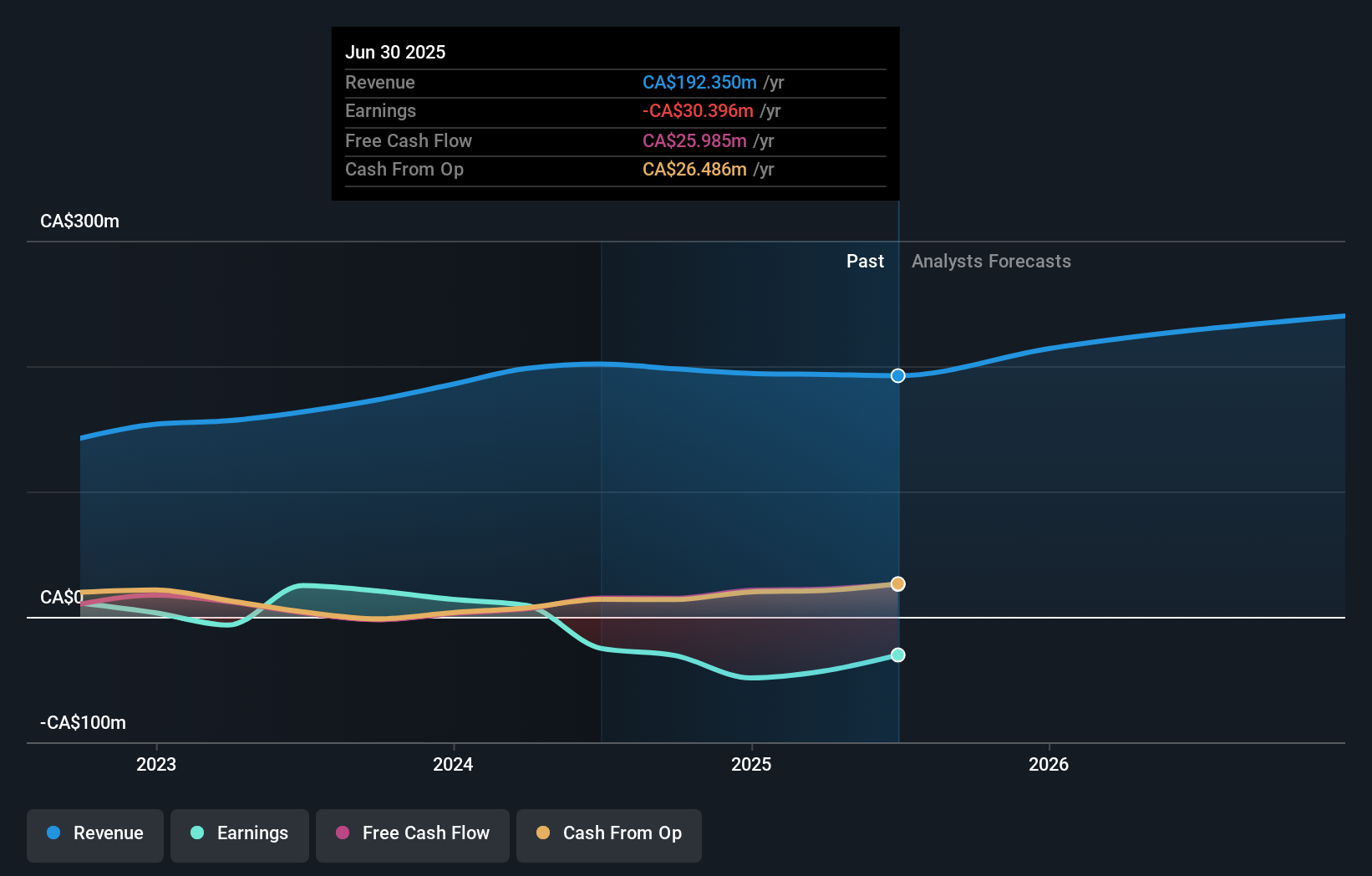Tiny Ltd.’s (CVE:TINY) biggest owners are individual investors who got richer after stock soared 17% last week

Key Insights
- The considerable ownership by individual investors in Tiny indicates that they collectively have a greater say in management and business strategy
- A total of 2 investors have a majority stake in the company with 51% ownership
- Insiders own 29% of Tiny
Every investor in Tiny Ltd. (CVE:TINY) should be aware of the most powerful shareholder groups. And the group that holds the biggest piece of the pie are individual investors with 41% ownership. That is, the group stands to benefit the most if the stock rises (or lose the most if there is a downturn).
As a result, individual investors were the biggest beneficiaries of last week’s 17% gain.
Let’s delve deeper into each type of owner of Tiny, beginning with the chart below.
Check out our latest analysis for Tiny
What Does The Lack Of Institutional Ownership Tell Us About Tiny?
Small companies that are not very actively traded often lack institutional investors, but it’s less common to see large companies without them.
There are many reasons why a company might not have any institutions on the share registry. It may be hard for institutions to buy large amounts of shares, if liquidity (the amount of shares traded each day) is low. If the company has not needed to raise capital, institutions might lack the opportunity to build a position. It is also possible that fund managers don’t own the stock because they aren’t convinced it will perform well. Tiny’s earnings and revenue track record (below) may not be compelling to institutional investors — or they simply might not have looked at the business closely.

Tiny is not owned by hedge funds. A. Wilkinson Holdings Ltd. is currently the largest shareholder, with 30% of shares outstanding. For context, the second largest shareholder holds about 21% of the shares outstanding, followed by an ownership of 7.7% by the third-largest shareholder. Interestingly, the bottom two of the top three shareholders also hold the title of Top Key Executive and Vice Chairman, respectively, suggesting that these insiders have a personal stake in the company.
A more detailed study of the shareholder registry showed us that 2 of the top shareholders have a considerable amount of ownership in the company, via their 51% stake.
While studying institutional ownership for a company can add value to your research, it is also a good practice to research analyst recommendations to get a deeper understand of a stock’s expected performance. While there is some analyst coverage, the company is probably not widely covered. So it could gain more attention, down the track.
Insider Ownership Of Tiny
The definition of company insiders can be subjective and does vary between jurisdictions. Our data reflects individual insiders, capturing board members at the very least. Company management run the business, but the CEO will answer to the board, even if he or she is a member of it.
Insider ownership is positive when it signals leadership are thinking like the true owners of the company. However, high insider ownership can also give immense power to a small group within the company. This can be negative in some circumstances.
Our information suggests that insiders maintain a significant holding in Tiny Ltd.. Insiders own CA$63m worth of shares in the CA$214m company. We would say this shows alignment with shareholders, but it is worth noting that the company is still quite small; some insiders may have founded the business. You can click here to see if those insiders have been buying or selling.
General Public Ownership
The general public, who are usually individual investors, hold a 41% stake in Tiny. While this group can’t necessarily call the shots, it can certainly have a real influence on how the company is run.
Private Company Ownership
We can see that Private Companies own 30%, of the shares on issue. Private companies may be related parties. Sometimes insiders have an interest in a public company through a holding in a private company, rather than in their own capacity as an individual. While it’s hard to draw any broad stroke conclusions, it is worth noting as an area for further research.
Next Steps:
While it is well worth considering the different groups that own a company, there are other factors that are even more important. Like risks, for instance. Every company has them, and we’ve spotted 2 warning signs for Tiny (of which 1 doesn’t sit too well with us!) you should know about.
But ultimately it is the future, not the past, that will determine how well the owners of this business will do. Therefore we think it advisable to take a look at this free report showing whether analysts are predicting a brighter future.
NB: Figures in this article are calculated using data from the last twelve months, which refer to the 12-month period ending on the last date of the month the financial statement is dated. This may not be consistent with full year annual report figures.
Valuation is complex, but we’re here to simplify it.
Discover if Tiny might be undervalued or overvalued with our detailed analysis, featuring fair value estimates, potential risks, dividends, insider trades, and its financial condition.
Have feedback on this article? Concerned about the content? Get in touch with us directly. Alternatively, email editorial-team (at) simplywallst.com.
This article by Simply Wall St is general in nature. We provide commentary based on historical data and analyst forecasts only using an unbiased methodology and our articles are not intended to be financial advice. It does not constitute a recommendation to buy or sell any stock, and does not take account of your objectives, or your financial situation. We aim to bring you long-term focused analysis driven by fundamental data. Note that our analysis may not factor in the latest price-sensitive company announcements or qualitative material. Simply Wall St has no position in any stocks mentioned.
Credit: Source link






